|
|
Invited Speakers 2014
| Morphogenetic self-organisation of swarm robots for adaptive pattern formation |
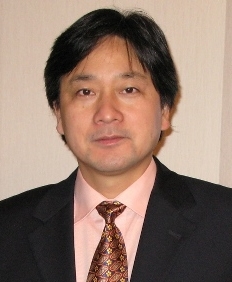 |
Prof. Yaochu Jin
Department of Computing (Head of NICE group)
University of Surrey
United Kingdom |
|
Morphogenesis is the biological process in which a fertilized cell proliferates, producing a large number of cells that interact with each other to generate the body plan of an organism. Biological morphogenesis, governed by gene regulatory networks through cellular and molecular interactions, can be seen as a self-organizing process. This talk presents a methodology that uses genetic and cellular mechanisms inspired from biological morphogenesis to self-organize swarm robots for adaptive pattern formation in changing environments. We show that the morphogenetic approach is able to self-organize swarm robots without a centralized control, which is nevertheless able to generate predictable global behaviors.
Professor Yaochu Jin is Professor of Computational Intelligence and heads the Nature Inspired Computing and Engineering (NICE) Group , Department of Computing, University of Surrey, Guildford, Surrey, UK. He was Principal Scientist and Group Leader at the Honda Research Institute Europe, Germany before he was appointed Chair in Computational Intelligence at University of Surrey in June 2010. He has published over 150 journal and conference papers and was granted 7 US/EU/Japan patents. His papers have reported over 6,000 citations. Since June 2010, he has successfully attracted funding from EU FP7, UK EPSRC, and industries, including Santander, Bosch UK, HR Wallingford, Intellas UK Ltd, Aero Optimal and Honda. Professor Jin is Vice President for Technical Activities of the IEEE Computational Intelligence Society (2014-2015) and an IEEE Distinguished Lecturer. He currently serves as an Associate Editor of BioSystems, the IEEE Transactions on Cybernetics, the IEEE Transactions on Nanobioscience, IEEE Computational Intelligence Magazine, the Soft Computing Journal and the International Journal of Fuzzy Systems. He is an Editorial Board Member of the Evolutionary Computation Journal (MIT Press).
More information can be found
here.
|
| Analysing Evolutionary Algorithms and Other Randomised Search Heuristics: From Run Time Analysis to Fixed Budget Computations |
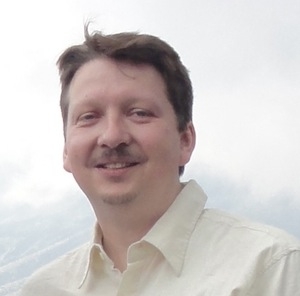 |
Dr. Thomas Jansen
Dept. of Computer Science
Aberystwyth University
United Kingdom |
|
Evolutionary algorithms and other randomised search heuristics are often used to tackle difficult optimisation problems. In this context the most important question we want to see answered by an analysis of these algorithms is that of their efficiency. How well does a specific heuristic perform on a specific problem? In the last 20 years the theory of evolutionary algorithms has developed run time analysis to answer a specific version of this question. How long does it take a specific heuristic on average to find an optimal solution of a specific problem? There is a large number of impressing successes, developing analytical tools and applying them to increasingly complex heuristics and problems. However, it is not clear how practitioners in the field have benefitted from these developments. One can argue that evolutionary algorithm theory has concentrated on an aspect of performance that is at odds with real applications of evolutionary algorithms. A rather novel perspective, fixed budget computations, are a better match with the way evolutionary algorithms are applied. The talk provides an overview of the state of the art in evolutionary algorithm theory, introduces fixed budget computations and explains how results from run time theory can systematically be transformed into results of this new and more useful type.
Thomas Jansen is Senior Lecturer at the Department of Computer Science at Aberystwyth University, Wales, UK (since January 2013). He studied Computer Science at the University of Dortmund, Germany, and received his diploma and Ph.D. there. From September 2001 to August 2002 he stayed as a Post-Doc at Kenneth De Jong's EClab at the George Mason University in Fairfax, VA. He has published 19 journal papers, 40 conference papers, contributed seven book chapters and authored one book on evolutionary algorithm theory. His research is centred around design and theoretical analysis of artificial immune systems, evolutionary algorithms and other randomised search heuristics. He is associate editor of Evolutionary Computation (MIT Press) and Artificial Intelligence (Elsevier), member of the steering committee of the Theory of Randomised Search Heuristics workshop series and co-track chair of the Genetic Algorithm track of GECCO 2013 and 2014. In 2015 he will be co-organising FOGA 2015.
More information can be found
here.
|
| Adaptation for Differential Evolution |
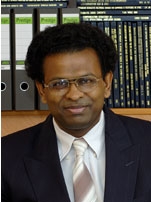 |
Assoc. Prof. Ponnuthurai Nagaratnam Suganthan
School of Electrical and Electronic Engineering
Nanyang Technological University
Singapore |
|
Differential evolution has recently become a (or the most) competitive real-parameter optimizer in diverse scenarios. This talk will present some important parameter and operator adaptation methods used with differential evolution currently. The talk will also touch on a few different optimization problem scenarios such as single objective, multiobjective, dynamic, multimodal, etc. The talk will also identify some future research directions.
Ponnuthurai Nagaratnam Suganthan received the B.A degree and M.A degree in Electrical and Information Engineering from the University of Cambridge, UK. He obtained his Ph.D. degree from the School of Electrical and Electronic Engineering, Nanyang Technological University, Singapore. He is an Editorial Board Member of the Evolutionary Computation Journal, MIT Press. He is an associate editor of the IEEE Trans on Cybernetics (formerly IEEE T-SMC-B), IEEE Trans on Evolutionary Computation, Information Sciences (Elsevier), Pattern Recognition (Elsevier). He is a founding co-editor-in-chief of Swarm and Evolutionary Computation, an Elsevier Journal. SaDE (April 2009) paper won "IEEE Trans. on Evolutionary Computation" outstanding paper award in 2012. His research interests include evolutionary computation, pattern recognition, multi-objective evolutionary algorithms, applications of evolutionary computation and neural networks. His publications have been well cited (Googlescholar Citations: 11k). His SCI indexed publications attracted over 1000 SCI citations in calendar year 2013 alone. He is a Senior Member of the IEEE and an elected AdCom member of the IEEE CIS (2014-2016).
More information can be found
here.
|
| Mathematical chaotic circuits: an efficient tool for shaping numerous architectures of mixed Chaotic/Pseudo Random Number Generators |
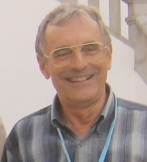 |
Prof. René Lozi
Laboratoire J.A. Dieudonné
Université de Nice Sophia-Antipolis
France |
|
During the last decades, on one hand, it had been highlighted the duality between chaotic numbers and pseudo-random numbers (e.g. sometimes chaotic numbers used in particle swam optimisation are more efficient than pseudo-random numbers, sometimes high quality pseudo-random numbers are needed for cryptography).
On the other hand, emergence of pseudo-randomness from chaos via various under-sampling methods has been recently discovered. Instead of opposing both qualities (chaos and pseudo-randomness) of numbers, it should be more interesting to shape mixed Chaotic/Pseudo-random number generators, which can modulate the desired properties between chaos and pseudo-randomness.
Because nowadays there exist increasing demands for new and more efficient number generators of this type (these demands arise from different applications, such as multi-agents competition, global optimisation via evolutionary algorithms or secure information transmission ,etc.), it is important to develop new tools to shape more or less automatically various families of such generators.
Mathematical chaotic circuits have been recently introduced for such a purpose. By analogy of electronic circuitry: i;e. the design of electronic circuits which are composed of individual electronic components, such as resistors, transistors, capacitors, inductors and diodes, connected by conductive wires through which electric current can flow; mathematical chaotic circuits are composed of individual components (generators, couplers, samplers, mixers, and reducers, ...) connected through streams of data. The combination of such mathematical components leads to several news applications such as improving the performance of well known chaotic attractors (Hénon, Chua, Lorenz, Rössler,...).
They can be also used in larger scale to shape numerous architectures of mixed Chaotic/Pseudo Random Number Generators, as we will show in this talk.
Professor René Lozi received his Ph.D. from the University of Nice in 1975 and the French State Thesis under the supervision of Prof. René Thom in 1983. In 1991, he became Full Professor at Laboratoire J.A. Dieudonné, University of Nice and IUFM. He has served as the Director of IUFM (2001-2006) and as Vice-Chairman of the French Board of Directors of IUFM (2004-2006). He is member of the Editorial Board of Indian J. of Indust. and Appl. Maths and J. of Nonlinear Systems and Appl., and member of the Honorary Editorial Board of Intern. J. of Bifurcation and Chaos. In 1977 he entered the domain of dynamical systems, in which he discovered a particular mapping of the plane producing a very simple strange attractor (now known as the "Lozi map"). Nowadays his research areas include complexity and emergences theories, dynamical systems, bifurcation and chaos, control of chaos and cryptography based chaos. He is working in this field with renowned researchers, such as Professors Leon O. Chua (inventor of "Chua circuit") and Alexander Sharkovsky (who introduced the "Sharkovsky's order").
More information can be found
here.
|
Special (Singular) Talk:
| Vortex-fractal-ring Structures as a new Perspective in Chemistry |
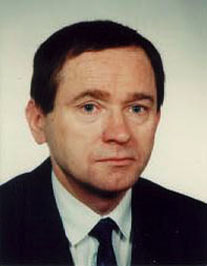 |
Prof. Pavel Ošmera
Dept. of Applied Computer Science
Brno University of Technology
Czech Republic |
|
We tried to combine the basic principle of grammatical evolution with vortex-ring-fractal structures of atoms to create new molecule structures. This approach combines knowledge of evolutionary optimization with physical chemistry.... (it will be finalized soon)
Pavel Ošmera graduated at Technical University of Brno in 1969 (specialization Technical Cybernetics). Since 1984 he has been working at the same University. He was also visiting professor at Loughborough University of Technology (UK), University of Hamilton, University of Toronto (Canada) and Shizuoko University of Japan. Since 1994 to 2000 he was head and founder of Institute of Automatization and Information Technology. He is one of the first, or maybe the first scientist who brought and practiced Evolutionary Computation and Soft Computing principles in the Czech Republic. Since 1993 his research is oriented to optimization problems which can be optimized by Evolutionary Algorithms. Pavel Ošmera is the founder of the MENDEL Conference (which was established in 1995). He works in the following scientific areas: evolutionary optimization, fuzzy control, neural networks, physical chemistry.
More information can be found
here.
|
|






